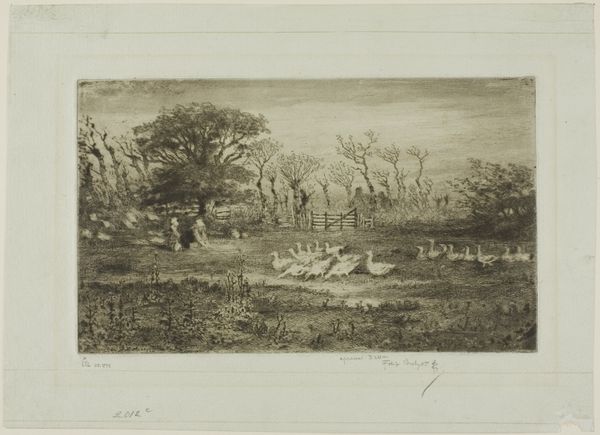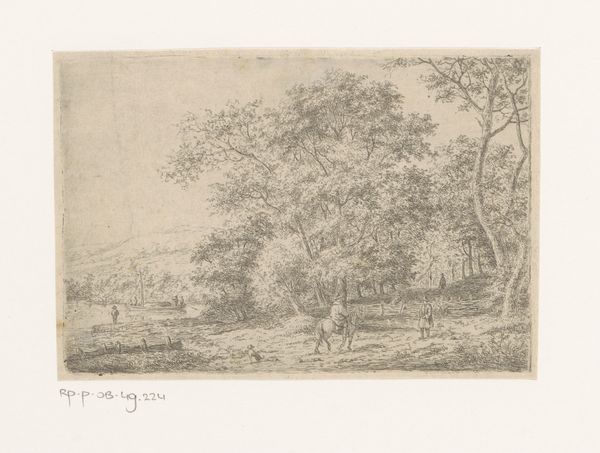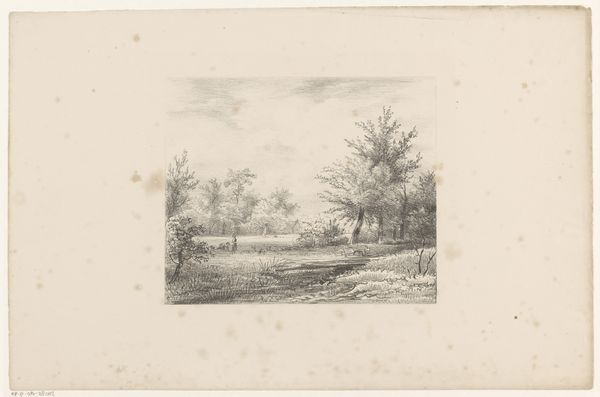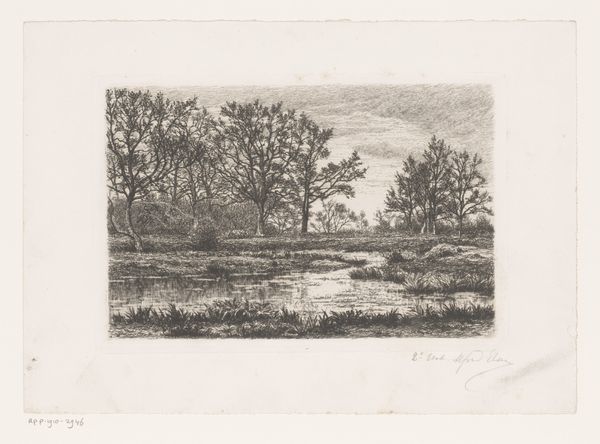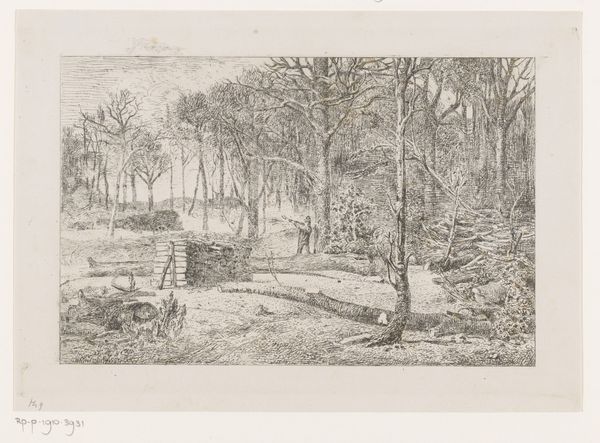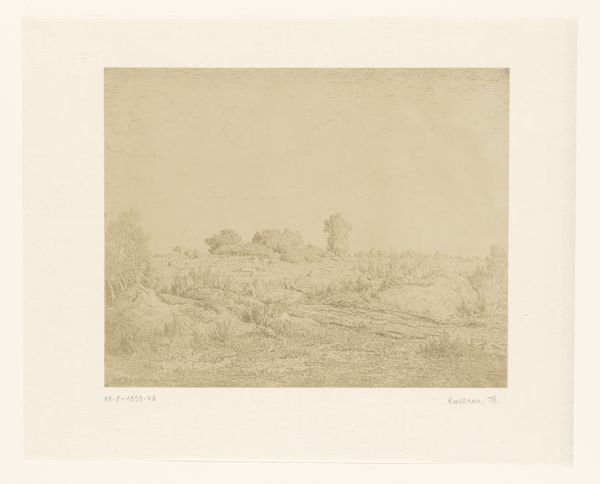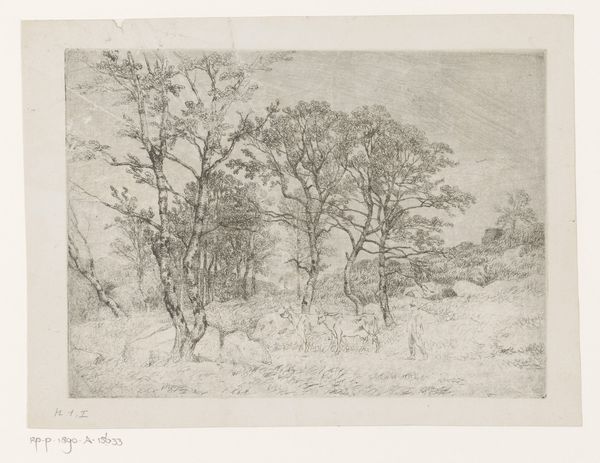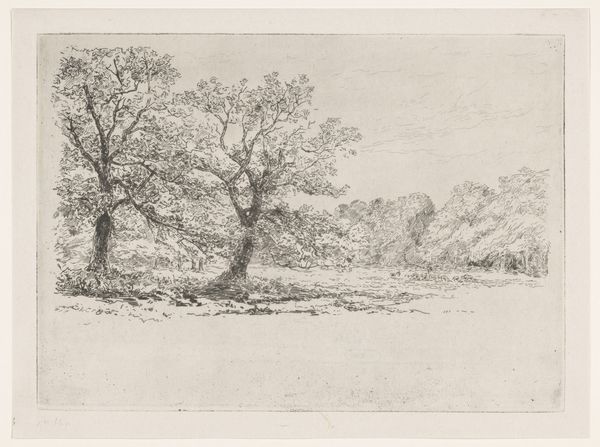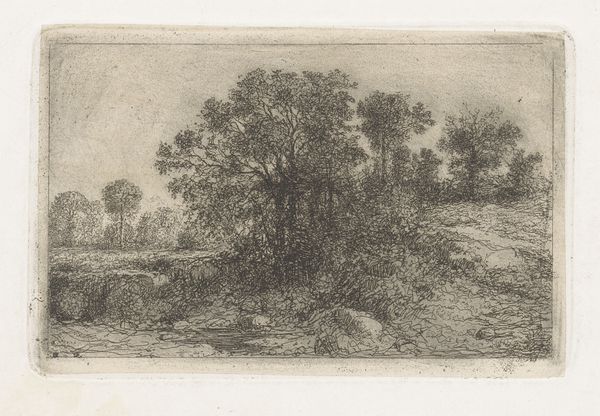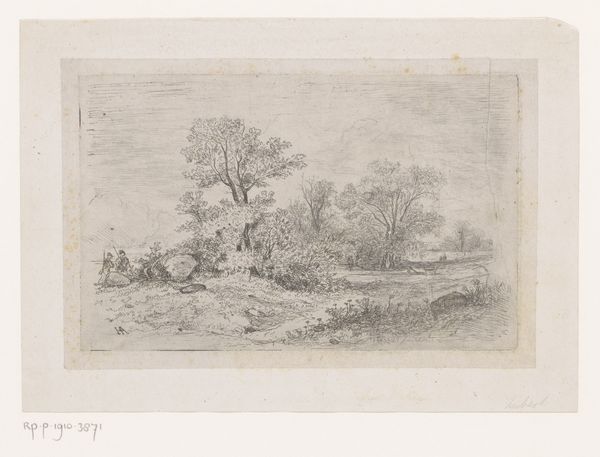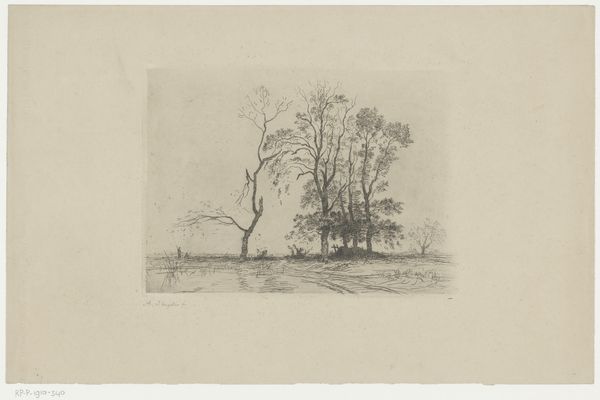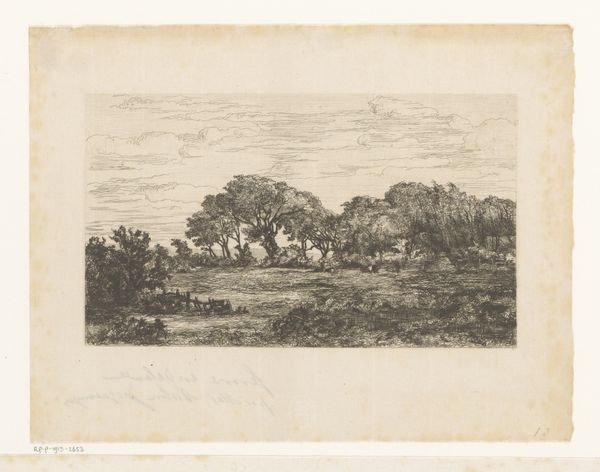
drawing, print, pencil
#
pencil drawn
#
drawing
# print
#
impressionism
#
pencil sketch
#
old engraving style
#
landscape
#
pencil
#
pencil work
Dimensions: height 155 mm, width 255 mm
Copyright: Rijks Museum: Open Domain
Curator: My first thought is… what a hushed little scene. A gaggle of geese in a field, rendered so delicately in pencil. Editor: Indeed. Here we have Félix Hilaire Buhot’s “Geese in a Meadow,” dating from 1887. What I find particularly fascinating is Buhot's technical experimentation. This is more than just a pencil sketch; it’s a print, exploiting the tonal range achievable through graphite on paper. Curator: The texture is beautiful – all those scratchy lines building up the forms. The field is practically alive with texture. What paper would he have used? I wonder if it affected how the pencil behaved... Editor: It's likely a fairly robust paper stock, given the pressure evident in some of those darker lines. Looking at Buhot’s context, it’s fascinating how his printmaking challenged the hierarchy of art. Consider that printmaking in the 19th century was often seen as reproductive, rather than an act of original artistry. Curator: It absolutely blurs those lines. This isn’t just documentation; it’s artistic intervention. I’m also curious about the location; a meadow is any meadow unless it carries certain indications like land tenure or ownership structure… How might we discover what social class this scene served to portray at that moment? Editor: Excellent questions! It's worth considering the rise of the bourgeoisie and their idealized vision of rural life at the time. Scenes like this reinforced a certain notion of peaceful agrarian society, deliberately obscuring the harsher realities of rural poverty and the changing landscape of labour. Curator: That definitely deepens the meaning of the scene. Editor: The framing and presentation also play a significant role in reinforcing these narratives. Art wasn’t passively received but rather experienced within the established cultural institutions of the period. Buhot uses his print as a social statement, in conversation with that artistic milieu. Curator: Knowing that background infuses the work with another layer. It is a delicate sketch of geese on the one hand and an economic signifier on the other. Editor: Precisely. I will view landscape prints differently now.
Comments
No comments
Be the first to comment and join the conversation on the ultimate creative platform.
